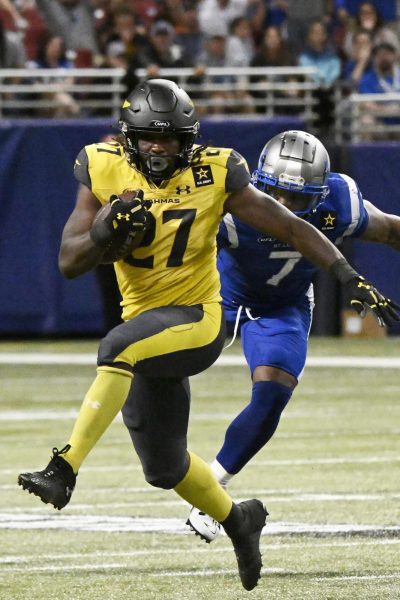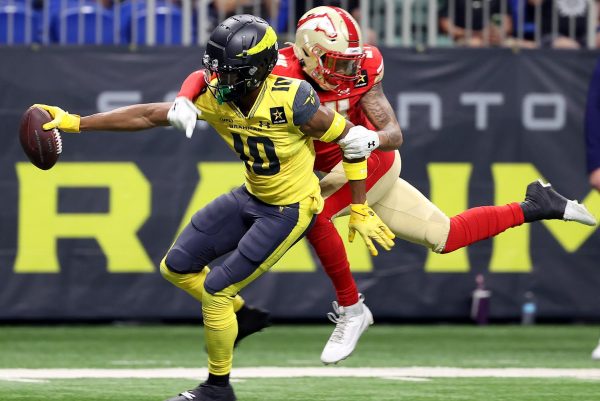New NCAA transfer rules approved, UTSA stands to benefit from the era of college free agency
Steve Henson, Karen Aston and Jeff Traylor have all established themselves as adept recruiters not just at the high school level but also on the transfer market in their careers. With the new transfer rules on the horizon it will be crucial for them and the other head coaches at UTSA to adapt to the changes quickly.
April 20, 2021
On Wednesday, April 14, college sports as we know them were changed forever. In a meeting, the NCAA Division I Council formally approved a rule change that will grant all college athletes a one-time transfer to any school in the country without having to sit out for a year. Previously, NCAA rules stipulated that any undergraduate player in football, baseball, men’s and women’s basketball and men’s ice hockey needed to sit out one season of play before they could suit up for their new school. This marks a significant change in major college sports, and much like the one-and-done rule instituted in men’s basketball in 2006, this has the chance to change the landscape of college sports.
From a broad perspective, this rule change will fundamentally alter the flow of college sports. The old rule stipulating that athletes in the major college sports must sit out a year acted as a moderator on athletes who may wish to explore a transfer. With the rule change now, there is no penalty for a one-time transfer, so it’s likely that more student athletes will be open to exploring other options if things aren’t working. College coaches are going to need to adapt to these changes quickly, or they will be at risk of being left behind. The transfer portal is likely to see a massive influx of activity, and the ability to recruit not just from the high school ranks but especially from the transfer market will become more important than ever before. On the flip side of things, the ability to keep your own players happy and hang on to talent will be absolutely crucial to the longevity and lifeblood of programs without the threat of having to sit out a season keeping some of these players from transferring. The threshold for circumstances making student athletes want to depart a program is likely to be much lower going forward, so it will be a real balancing act for these coaches to ensure their players don’t wish to explore a transfer while also ensuring the success of the program as a whole.
Currently, there’s a lot of debate surrounding who this rule will benefit the most among the different universities. Will the top programs in the country in their respective sports be able to lure any true superstars from smaller schools using the appeal of being able to compete for championships and have the most amount of people watching you? This will absolutely still happen, as top programs in college sports have been monopolizing talent at the high school level for decades now, and with this new rule, they’ll be able to make another pass at players that may have slipped through the cracks. However, there are only so many spots on any one sport’s roster, and at a certain point, players want to play in games. That’s why this rule change could also serve as a massive boon for smaller universities. Larger, more prestigious athletic programs have long monopolized talent at the highest levels of college sports, but all too often, we see numerous four and five-star recruits languishing on the bench without an opportunity to play. With this change removing the requirement to sit out for a season, how many more of these players will not be content to sit on the bench and explore the option of moving to a smaller school where they’ll be assured of playing time? This rule change, along with the upcoming changes to the rules regarding image and likeness, are set to serve as the great equalizers in college sports. Will top players from smaller schools depart for bigger opportunities at higher rates? Absolutely, but the flow of talent from larger schools to smaller schools will outpace the reverse, leading to a more even distribution of talent across the country.
UTSA, as a smaller institution, is inclined to see benefits from this change, but it will require the coaches in their respective sports to put in the work. UTSA, in recent years, has seen key contributors arrive via the transfer market, notably Cedric Alley Jr. and Eric Parrish last season in men’s basketball and Darius McNeil this coming season. Karen Aston has signed her first two players of her tenure as the head coach of women’s basketball from the transfer market, and Jeff Traylor recently added a fourth transfer to his 2021 signing class in football. With a trend of strong recruiters in head coaching positions at UTSA, it appears the school is well-positioned to reap the benefits of this new era. It cannot be overstated how impactful it is that the requirement to sit out a season to transfer as an undergraduate has been removed. Players that are discontent with their playing time and unhappy in their situations will be much more likely to explore their options. For a small school like UTSA, that is in the process of building a strong culture in all of its athletic programs, perhaps most notably the football program. This new freedom to explore options without penalty could convince someone to make a move here. On the other hand, UTSA will need to rely on that strong culture to convince their premiere players to stay. Over the last couple of years, UTSA has produced a handful of superstars that many top-tier Division I programs were likely pining to get their hands on. Whether any of them would’ve entertained a move to a power five program without the penalty of sitting out a season is purely hypothetical and one that has little bearing. Going forward, however, it’s important that all of our athletic programs do their best to hang onto the talent we bring here. Student athletes rarely transfer for no reason; there has to be a motivation for wanting to go elsewhere. Some will want to transfer for the chance at a bigger opportunity, and there’s little that can be done about that. Others, however, transfer for reasons that can be prevented, and it is those transfers that UTSA must limit as we enter this era of college free agency. The transfer rules increase the likelihood that some of our players may transfer at some point, but this is the case across the entire country. The degree to which the athletic program builds a brand that limits that exodus will define how successful they are moving into the new era.
UTSA is in the middle of a very important transition athletically. The $41 million-dollar RACE building will provide UTSA with a high-end athletic training facility for all of their various sports. The athletic department has brought in a group of coaches that have energized their various programs, and it appears UTSA is on the path to growth. That’s why it’s so crucial for UTSA to capitalize on this new era of NCAA transfer rules. The chance to benefit is right there for the taking; all UTSA has to do is continue to expand on its strength in recruiting and the transfer market.











